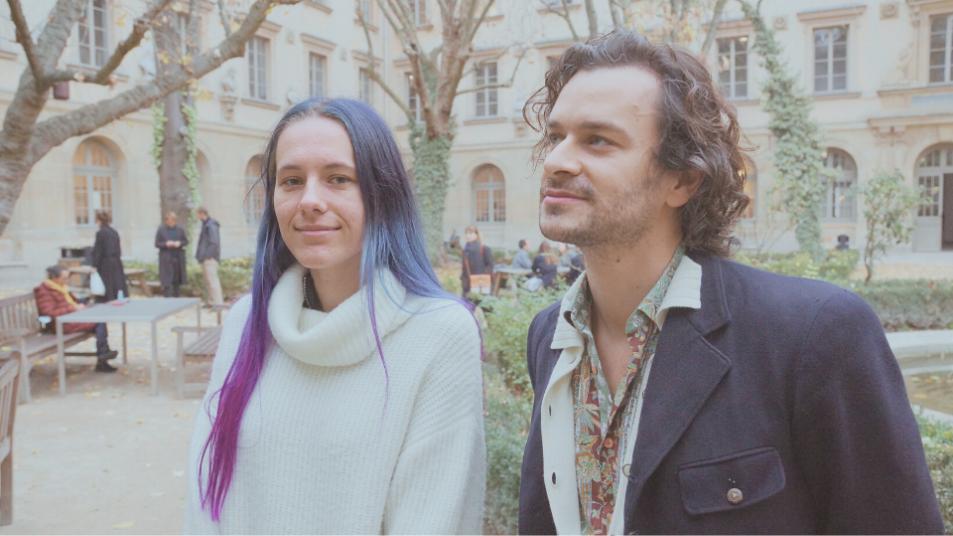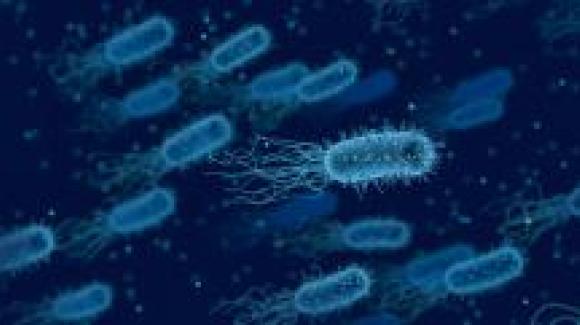
News
Mariia Legenkaia and Sebastien Wolf : when physics and biology meets
Published on
23 November 2021
, updated on
25 November 2021
Image

A few months ago, Mariia Legenkaia joined Sebastien Wolf on the adventure between the physics and the biology departments, at the ENS. With a team on their side, they worked on several joined projects developed over years by the two laboratories. Together, they explain the experiences and their feelings towards it.
Mariia Legenkaia comes from Russia and graduated from a Bachelor’s degree in theoretical physics, at the Saint-Petersburg Academic University. After writing a thesis on mathematical physics, she gladly followed her professor's advice to apply to the physics Master in ENS, in order to benefit from a high-quality education. Currently preparing her PHD, she is attached to the ENS and considers it like “A place with the opportunity to discover different fields where I want to work”.
Sebastien Wolf studied at the ENS as well. After his prep, he learned about the fundamentals of physics : “At that time, I was really interested in biological questions, so from the beginning I wanted to work in between biology and physics“. Pursuing a Master's degree, he took a ticket to the New York University and accomplished an internship within a soft matter biophysics laboratory. It was a time where he worked on proteines, genomics and evolution : the kind of questions addressed by physicists in the field of biology. Later on, he discovered neuroscience by chance, and for his delight.
Sebastien points out that there are two fields in biology in which a physicist like him can work. First, the theoretical part that includes modeling and algorithmic, where a large group of physicists develop mathematical models in order to understand biology. Then, optical techniques that come from quantum physics as well as recording techniques.
Throughout his PHD, he worked on the development of optical microscopes to record the activities occurring in an animal’s brain. To this extent, new tools were created at the Sorbonne UPMC and by the end, his goal was reached. “I wanted to use it to address real biological questions“, specifies Sebastien. With his group, he discovered a new brain region of the zebrafish at its larva stage, named « Anterior Rhombencephalic Turning Region » that controls basic properties of the brain like the navigation of the fish. Today, there are a lot of models on humans about the head direction cells and its link with the eyes. However, it is clear that it’s easier to study a one centimeter fish than a human.
One discovery leads to another
The important discovery of Sebastien on the zebrafish led him to work with Rémi Monasson and Simona Cocco, both researchers at the ENS physics laboratory. Based on a few models, they described how the neural population was working and controlling some behaviors of the fish. Thrilled by this experience, he kept working on the modeling for his postdoctoral at ENS and met Laurent Bourdieu from the biology department. Statistical physics and machine learning techniques were applied to datasets available from his laboratory, “That is where the collaboration between the two laboratories began“.
Inspired by this fusion, Sebastien spent the last two years trying to amplify experimental questions within the two laboratories. They were addressed on mice, a new animal for him, in order to “Develop machine learning approaches that can be useful to model the dynamics and properties of Neuro Population in the cortex”.
Since she embarked on the internship in Rémi Monasson and Laurent Bourdieu’s teams, Mariia Legenkaia has had active interactions with Sebastien Wolf about the details and results of the project. The two laboratories are in a close collaboration.
In Laurent Bourdieu’s group, the project focuses on the activities of the cortex. Several projects came up, since “The cortex is divided into regions corresponding to different sensory inputs such as visual, somatosensory or auditory”. The experiment addressed a simple question, yet challenging for the two young researchers : how does the attentional state of an animal controls the auditory cortical activity ?
Sebastien gives us some examples : at a noisy party, your brain is still able to discuss with only one person. This process is called attentive state. On the other half, a passive state occurs when the voice of your professor comes to your ears but you're not paying attention to the class.
“It’s not a physical filter in our ears but a process controlled by the brain, which is a top-down mechanism where the auditory cortex is put in a situation where it focuses on a specific sound”, explains Sebastien. This concept isn’t well understood in neurosciences for the moment. Hoping for a change, Mariia and Sebastien collected datasets in the last two years, thanks to models and experiments. By putting mice under situations where they had to distinguish specific sounds in between other sounds, the physicists could record the activity of the auditory cortex.
Working together and joining disciplines
“It is interesting to see how people coming from different fields think and to notice on the same project the details they each care about”, affirms Mariia. It was exciting and unexpected for her to get close to the experiments, interact with the settings and recordings and discover the obstacles that could be on the way. For her internship report, she benefited from divergent opinions coming from the physics and biology laboratories.
Sebastien describes this collaboration as two communities with different methods, ways, approaches and sees it as a challenging difficulty : “You always have to jump between different ways to describe your work”. The post doctorate assumes that physics and biology will be closer in a few decades, just like it was in the past for physics. In fact, there was a separation between experimentalists and theorists but today, we see grouped laboratories where they interact with each other in a virtuous circle.
“Exciting and frustrating at the same time”
For a long time, there was a limitation in experimental neurosciences because of the difficulty to access Brain Data. “In the 50s-70s, mathematicians and theorists tried to model the brain mathematically but there was no data so no ways to tell if the theories were right or not. The field of computer neurosciences ended up developing machine learning, AI and algorithms used today in computers”, explains Sebastien. Thanks to new tools and techniques created since the 90s, neuroscientists are able to record and understand the brain activities.
However, neuroscience and biology can be difficult to study due to the important experimental limitations and variabilities. When physicists work in the field of biology, they find themselves frustrated seeing that there are no models or theories they can modify to fit better with the data ; a process followed in physics thanks to Newton, Einstein, quantum physics, mathematical solvings… Yet, “It's the good part, there is a lot to discover so it’s exciting and at the same time it can be frustrating”, confess Sebastien.
“It can be discouraging considering that it takes a couple of years to get datasets”, but Sebastien is optimistic that collaborations between mathematics, physics and neuroscience are going to develop in the future and bring outstanding results.
The QBio project : the place to be in Paris
Mariia Legenkaia thinks the QBio project as an interesting field to apply data science analysis to biological systems : “I am glad to have this opportunity and I hope to work on this topic in the future”. Mariia got the fundings from QBio, who will stay during her PHD in between the two laboratories where she shared her internship.
Sebastien Wolf has goals on his mind : after achieving a second post doctorate, he will hopefully work at the CNRS and become a researcher. “They have the chance in PSL and particularly ENS, to have well trained students : it’s one of the forces of the French University”. Sebastien, as well as many other biologists, are thrilled to welcome the theorists to address biological questions. Indeed, a lot of data hasn’t been analyzed due to a lack of tools and methods in some groups, so he considers it is a good time to do the QBio project in terms of experiments.
He ends up saying cheerfully : “QBio is the perfect place in Paris to do the junction between young students, PHD and post doctorates and to join biology and theory in order to share data and put the results in concepts and models”.



Be the first to review this item, please login or register.
Sign-inRegister